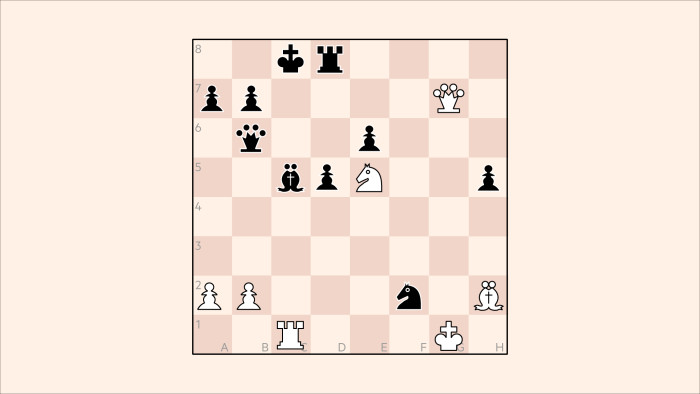Chess: how did France’s No1 defeat Russia’s world title challenger?

The Dragon Sicilian, where after 1 e4 c5 Black follows up with an early g7-g6 and Bf8-g7, is so named because the outline of Black’s pawn formation resembles the mythical beast. It has long been a favourite with players who like an early sharp counter-attack.
Several of England’s grandmasters past and present have used it in key games, particularly when meeting Russians. Tony Miles relied on it to defeat Alexander Kochiev in the decisive game for the 1974 world under-20 championship, the start of the ‘Chess Explosion’ which made England No2 to the Soviet Union.
The same year, at the unofficial world under-16, Jonathan Mestel innovated after 1 e4 c5 2 Nf3 d6 3 d4 cxd4 4 Nxf4 Nf6 5 Nc3 g6 6 f4 Bg7 7 e5, which had been thought strong for White, by 7...Nh5! with the idea of 8 g4? Nxf4!
Decades later, in the wake of games, articles and books, England’s current No3 Gawain Jones used the Dragon against Magnus Carlsen, won a piece early, but allowed the world champion to escape.
Last Saturday Jones was again in Dragon action, meeting a Russian in a qualifier for the online Champions Tour. His rival, Klementy Sychev, is little known but proved well prepared, winning all three games with White for a 4.5-1.5 margin. Afterwards Jones sent a brief message to his fans via the game comments: “Sorry guys, not a good day”.
The Yorkshireman’s books on the Dragon are recognised as classical guides to this complex opening, so he will surely be back with improvements before long.
Puzzle 2424
Maxime Vachier-Lagrave v Ian Nepomniachtchi, Grand Tour Paris Rapid 2021. White to move. France’s No 1 was three pawns down and faced with a disastrous discovered check. How did White turn the tables?
Click here for solution
Comments